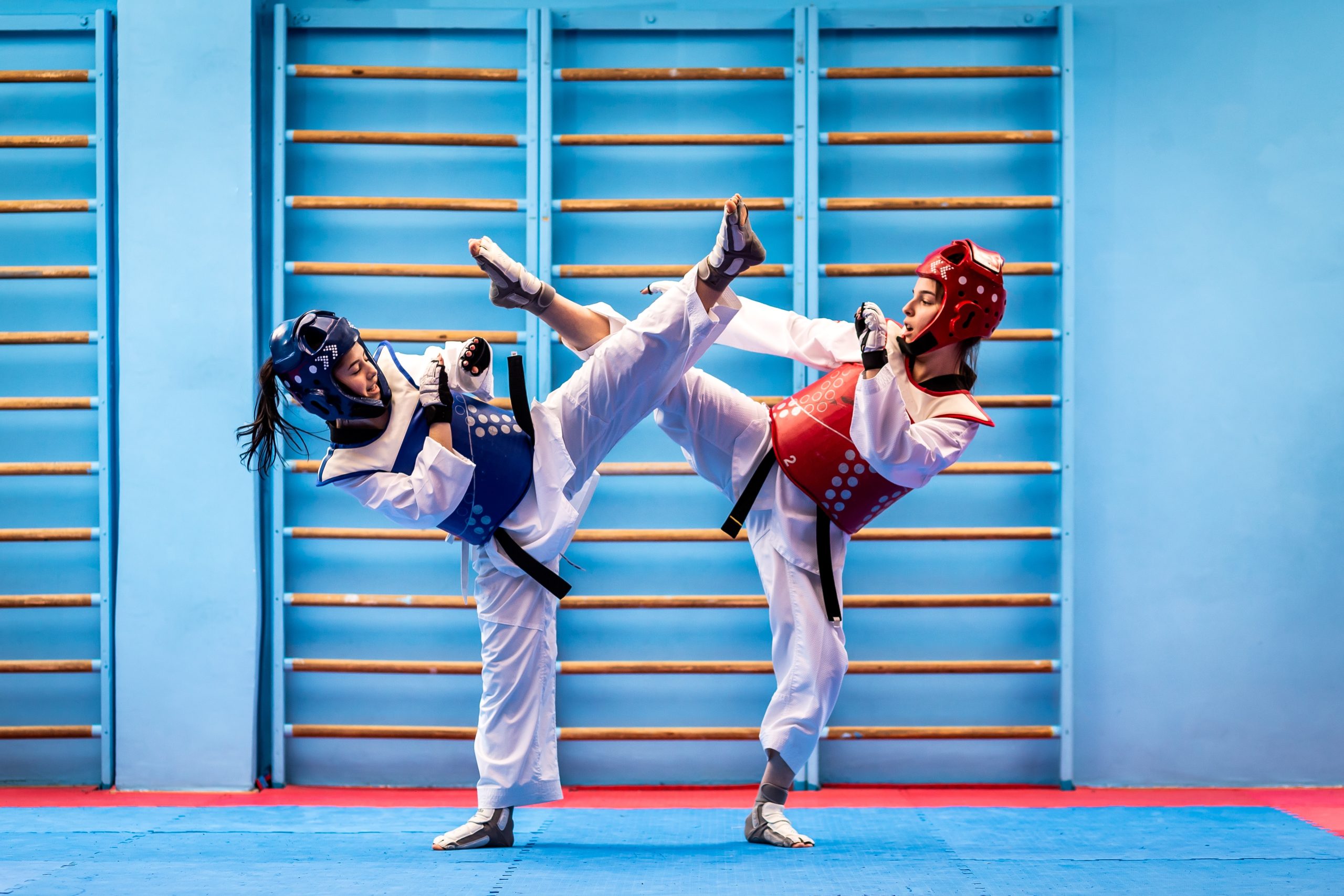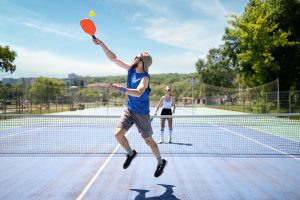Ready to unleash your inner martial artist and find your active crowd? Then you may want to give taekwondo a go! Read on to explore the basics, history, benefits and tips to kickstart your own journey with this ancient martial art and get inspired by Pan American Games Poomsae taekwondo silver medalist Jinsu Ha.
What is taekwondo?
Taekwondo is a Korean martial art of self-defense and combat sport that involves kicking, punching and blocking techniques to repel an opponent. Tae means “strike with the foot”, kwon means “strike with the hand” and do means “the way”.
Taekwondo requires three physical skills:
- Poomsae: patterns showing a range of kicking, punching and blocking techniques
- Kyorugi: full-contact sparring
- Gyeokpa: breaking wooden boards

“Taekwondo is hard to get bored of because there’s always something new to learn and master, whether it’s a new kicking combo, Poomsae, spinning kick or jumping kick. The variety also allows you to focus on what suits your strengths best.” — Jinsu Ha, Pan American Games Poomsae taekwondo silver medalist
There are also five tenets to taekwondo:
- Courtesy
- Integrity
- Perseverance
- Self-control
- Indomitable spirit

Wearing traditional white uniforms called doboks, athletes compete in three two-minute rounds within an eight-metre by eight-metre ring. Each athlete scores by landing different kicks and punches on their opponent’s torso or head:
- A punch to the torso: one point
- A kick to the torso: two points
- A kick to the head: three points
- A spinning kick to the torso: four points
- A spinning kick to the head: five points

The athlete that scores the most points wins the round.
The history of taekwondo
Originating in Korea over 2,000 years ago, taekwondo is one of the oldest martial arts. When Japan occupied Korea in the early 1900s, Korean military arts, including taekwondo, were banned. While some kept practicing them in secret, others traveled to China or Japan to learn. Since karate, judo and kung fu were all introduced to Korea, taekwondo branched off into different styles with different influences.
When Japanese occupation ended in 1945, the first taekwondo schools (kwans) opened in Korea. The taekwondo we see today originated in 1955 after kwan masters chose to combine the different styles and teach the sport in a more standardized way. Taekwondo debuted as a demonstration sport at the Seoul 1988 Games, but it wasn’t until the Sydney 2000 Games that it became an official medal sport.
Taekwondo vs. karate vs. judo
Karate and judo are also martial arts and combat sports like taekwondo, but there are some key differences among them. For example, as mentioned earlier, taekwondo originated in Korea. Karate and judo, however, were both created in Japan.
Taekwondo also involves more kicking, jumping and spinning than karate, and athletes use their hands as backup. Karate, on the other hand, uses more hand attacks, and athletes use kicks as backup. This means their legs mostly stay on the ground.

Judo is similar to wrestling; athletes use throws, joint locks and chokes, with the goal of immobilizing their opponents rather than striking them as in taekwondo and karate.
The benefits of taekwondo
Not only is taekwondo an excellent way to learn self-defense, but it’s also a full-body aerobic workout that can help build muscle and improve balance. Similar to other group sports, taekwondo also provides many mental and social benefits. For example, it teaches patience, self-discipline and mindfulness.
“Taekwondo emphasizes discipline, as athletes learn self-control through proper sitting and attention stances, helping them focus on real-world tasks. For me personally, the training and competitions have made me mentally stronger, giving me the confidence to overcome obstacles as they arise.” — Jinsu Ha
Plus, since being part of a taekwondo class or club offers opportunities for social interaction with instructors and other participants, it can help you develop strong social bonds and a robust mental health support system. Being part of a taekwondo class or club can also expose you to positive influences that may encourage you to push yourself and/or take part in after-class celebrations or club socials that could benefit your mental health even more.
How to kickstart your taekwondo journey
Now that you’re in the know about taekwondo, ready to give it a go? Visit the Taekwondo Canada website, scroll down and enter your postal code to near you and kickstart your taekwondo journey today!

“Taekwondo dojangs are easy to find, and the sport requires minimal equipment – just look for a well-reviewed dojang and try it out with a trial lesson.” — Jinsu Ha
Let’s put your taekwondo knowledge to the test!








